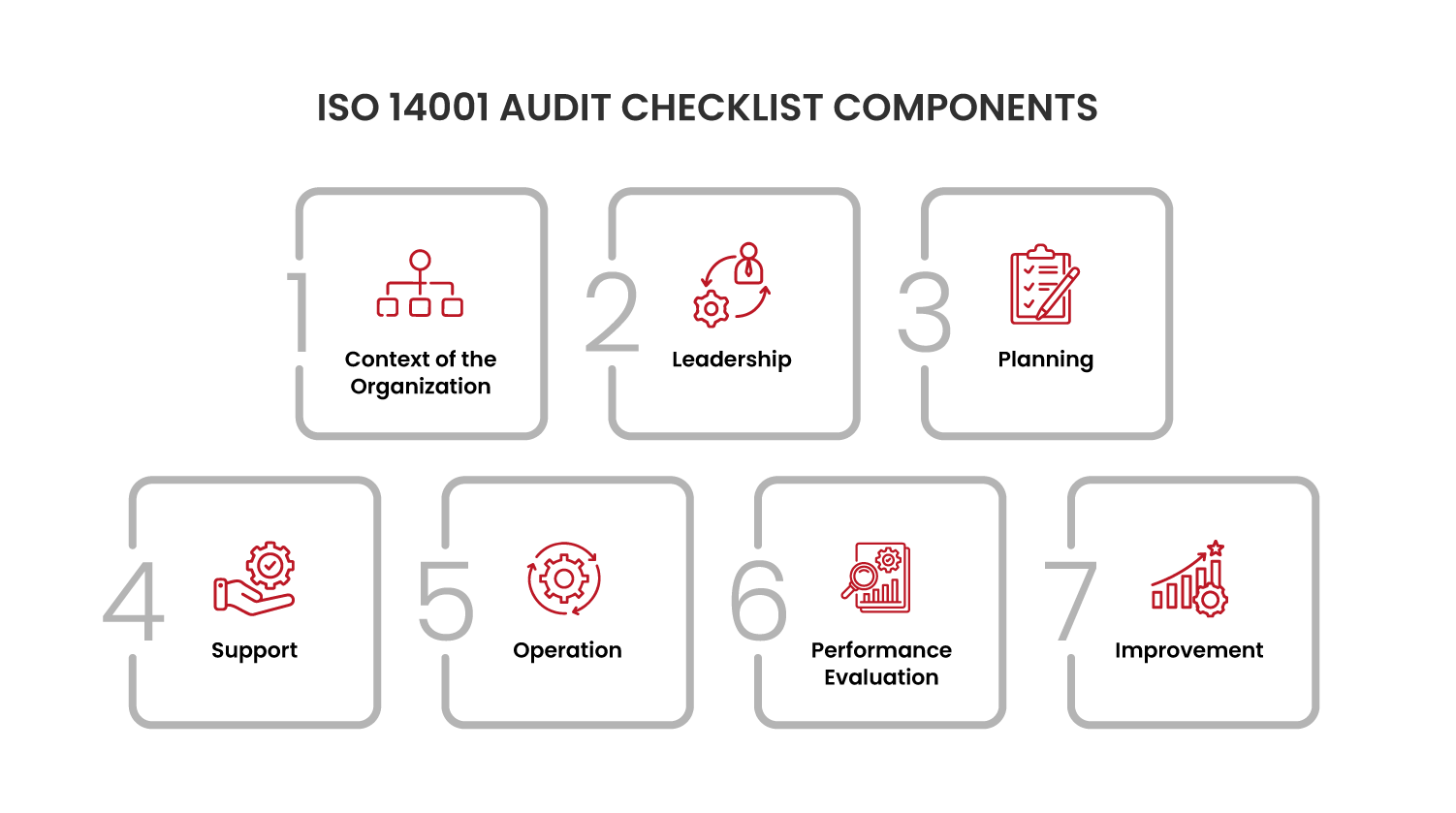Why do some organizations bounce back from crises stronger, while others strugg....
ISO 14001 Audit Checklist

Environmental responsibility has become a critical aspect of modern business practices. With increased regulations and growing stakeholder expectations, organizations must prioritize, not only profitability, but also sustainability.
What is ISO 14001?
ISO 14001, an internationally recognized standard, provides a framework for establishing, implementing, and maintaining an environmental management system (EMS) that supports compliance and promotes environmental performance improvement. As part of the ISO 14000 family of standards related to environmental management, it offers tools and guidelines to help organizations reduce their environmental impact.
Conformity with ISO 14001, not only ensures adherence to environmental regulations, but also demonstrates an organization’s commitment to sustainability. In an era where consumers, regulators, and stakeholders are increasingly concerned with environmental responsibility, ISO 14001 conformity is essential for maintaining trust and improving operational efficiency.
The ISO 14001 audit is a structured process that evaluates an organization’s EMS and its alignment with the standard’s requirements. A comprehensive ISO 14001 audit checklist should cover several key components, including the following:
ISO 14001 Audit Checklist Components

Context of the Organization
This component requires the organization to identify both internal and external issues that may influence its ability to achieve its environmental objectives. It also involves understanding the needs and expectations of interested parties, such as regulatory bodies, customers, and the local community.
Key importance: By understanding the broader context, organizations can better align their environmental strategies with their business objectives and external factors like regulatory changes.
Conformity assessment: The organization should review its assessment of external and internal factors to determine whether these factors are incorporated into the EMS. Additionally, it is equally important to assess how well the organization considers stakeholders’ expectations.
Common challenges: Organizations often fail to account for changing environmental regulations or underestimate external risks.
Recommendations: The context should be regularly updated through environmental scans, ensuring that significant changes in legal or market conditions are reflected.
Leadership
Leadership involves the role of top management in establishing an EMS that aligns with the organization’s vision and mission. This includes setting environmental policies, ensuring resources are allocated effectively, and appropriately assigning and communicating roles and responsibilities.
Key importance: Strong leadership drives commitment to environmental objectives and motivates all levels of the organization to engage with the EMS.
Conformity assessment: The involvement of top management in creating, communicating, and maintaining environmental policies should be assessed. Leadership must provide adequate resources and actively participate in EMS reviews.
Common challenges: Delegating environmental responsibilities solely to the environmental department without ensuring active leadership involvement is a common issue.
Recommendations: Top management should visibly support and participate in environmental initiatives, such as attending EMS meetings or making public commitments to sustainability.
Planning
This section focuses on planning actions to address risks, opportunities, and legal requirements associated with environmental aspects. It includes identifying environmental objectives and planning how to achieve them.
Key importance: Effective planning ensures the organization is prepared for risks and compliance requirements, preventing costly environmental incidents.
Conformity assessment: The organization’s documented risk assessments, legal requirements, and processes for setting and achieving environmental objectives and identifying environmental aspects should be reviewed.
Common challenges: Common issues include inadequate risk assessments and the oversight of potential future legal changes.
Recommendations: The planning process should be continuously reviewed and updated with emerging risks and changes in regulatory requirements.
Support
Support focuses on the resources needed to implement and maintain the EMS, including human resources, financial resources, awareness and communication, and control of documented information.
Key importance: Without adequate resources, the EMS cannot be effectively implemented or maintained.
Conformity assessment: An evaluation of whether the organization has allocated sufficient financial and personnel resources to maintain the EMS is necessary, along with ensuring that employees are competent in their roles within the EMS.
Common challenges: Insufficient funding for EMS initiatives or inadequate training for the staff responsible for environmental management are common pitfalls.
Recommendations: Regular assessments of the EMS resource needs should be conducted, ensuring that all employees, from top management to operational staff, understand their roles in achieving environmental objectives.
Operation
This section addresses the operational control of activities that may have significant environmental impacts. It includes maintaining documented procedures to ensure operations conform to the EMS requirements.
Key importance: Proper operational controls help to prevent environmental damage and ensure compliance with regulatory and internal standards.
Conformity assessment: Operational procedures and records should be reviewed to ensure alignment with EMS objectives. Observations of operations should verify compliance with documented processes.
Common challenges: Inconsistent application of operational controls or overlooking key environmental risks during day-to-day operations is a frequent issue.
Recommendations: Effective monitoring systems should be implemented to track environmental performance and ensure adherence to documented procedures.
Performance Evaluation
This component involves monitoring, measuring, and reviewing the EMS to evaluate performance and ensure continual improvement. It includes conducting internal audits and management reviews.
Key importance: Regular performance evaluation allows organizations to identify areas for improvement and demonstrate compliance with the standard.
Conformity assessment: It is essential to check whether the organization has established key performance indicators (KPIs) and conducts regular internal audits and management reviews to assess the effectiveness of the EMS.
Common challenges: Common issues include poor data collection, insufficient follow-up on audit findings, and a lack of engagement in management reviews.
Recommendations: Clear and measurable KPIs should be used for tracking performance, and regular reviews of the EMS with top management should be conducted to ensure continual improvement.
Improvement
Organizations must demonstrate continual improvement in their EMS by addressing nonconformities and implementing corrective actions. Improvement should be a proactive, ongoing process rather than a reactive one.
Key importance: Continuous improvement ensures that the EMS evolves to meet new challenges and enhance environmental performance.
Conformity assessment: Records of corrective actions, internal audits, and evidence of continual improvement in environmental performance should be reviewed.
Common challenges: Treating improvement as an afterthought and failing to implement corrective actions effectively are common challenges.
Recommendations: A culture of continual improvement should be fostered by encouraging employees at all levels to identify areas for environmental performance enhancements.
How can PECB help?
To support professionals in enhancing their environmental management practices, PECB provides comprehensive training courses and certification programs for roles such as:
PECB offers a wide range of training courses, certifications, and resources designed to help professionals and organizations strengthen their environmental management systems and achieve compliance with ISO 14001 standards.
About the Author
Florijeta Hulaj is the Senior Content Developer for GRC&QMS at PECB. She is responsible for developing and designing educational content, as well as writing articles. If you have any questions, please do not hesitate to contact her at: support@pecb.com.


